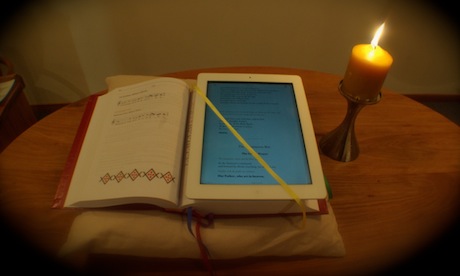It is true that we often speak of “sacred” vestments, books and objects but sacredness is not contained in the objects themselves. For centuries these were not blessed and churches were not consecrated because what makes objects sacred is what they are used for; the iPad is no exception says Liturgy professor, Mgr. Giulio Viviani, who was the papal master of ceremonies from 1997 until 2010.
“This is watershed moment,” he said. “For the first time in the history of Christianity, paper (and previously parchment) is not the only form of transmitting liturgical texts which were initially called “pamphlets” (books).
“The only risk I see in this is that of functionality. We often see the altar fully prepared, with the wine in its chalice, the microphone at the centre – a bit like a theatre set: wouldn’t we be losing a beauty and symbolism of gestures which should be respected? We should bear in mind, however, that it is not the Missal that is celebrated but the Mass.”
Padroni says he agree with New Zealand’s bishops that the liturgy must be safeguarded against abuse. “As with all things, it must be used prudently. When a bishop goes on a pastoral visit, it is assumed he will use official liturgical texts, but when he goes on holiday, he could use the iPad. A deacon in procession would not carry an iPad but the Gospel Book, partly because of its beauty, but mainly because it has a special significance. The problem arises when there is no missal: what is more correct, to use a missal book or an iPad? St. Paul advises against anything that may cause a scandal: if there is a risk that the assembly could think the parish priest is playing a game, checking his e-mails or becoming distracted by an electronic device, it is best to avoid using it,” he said.
Source
